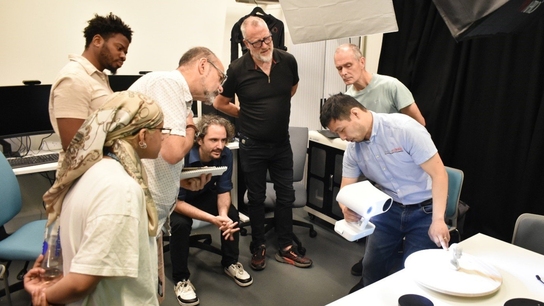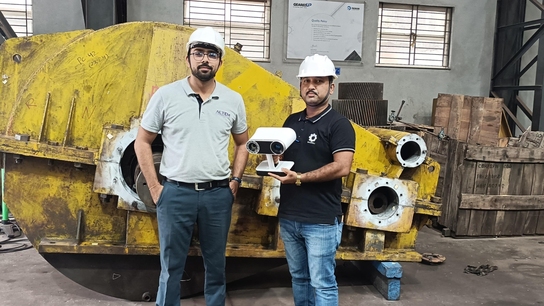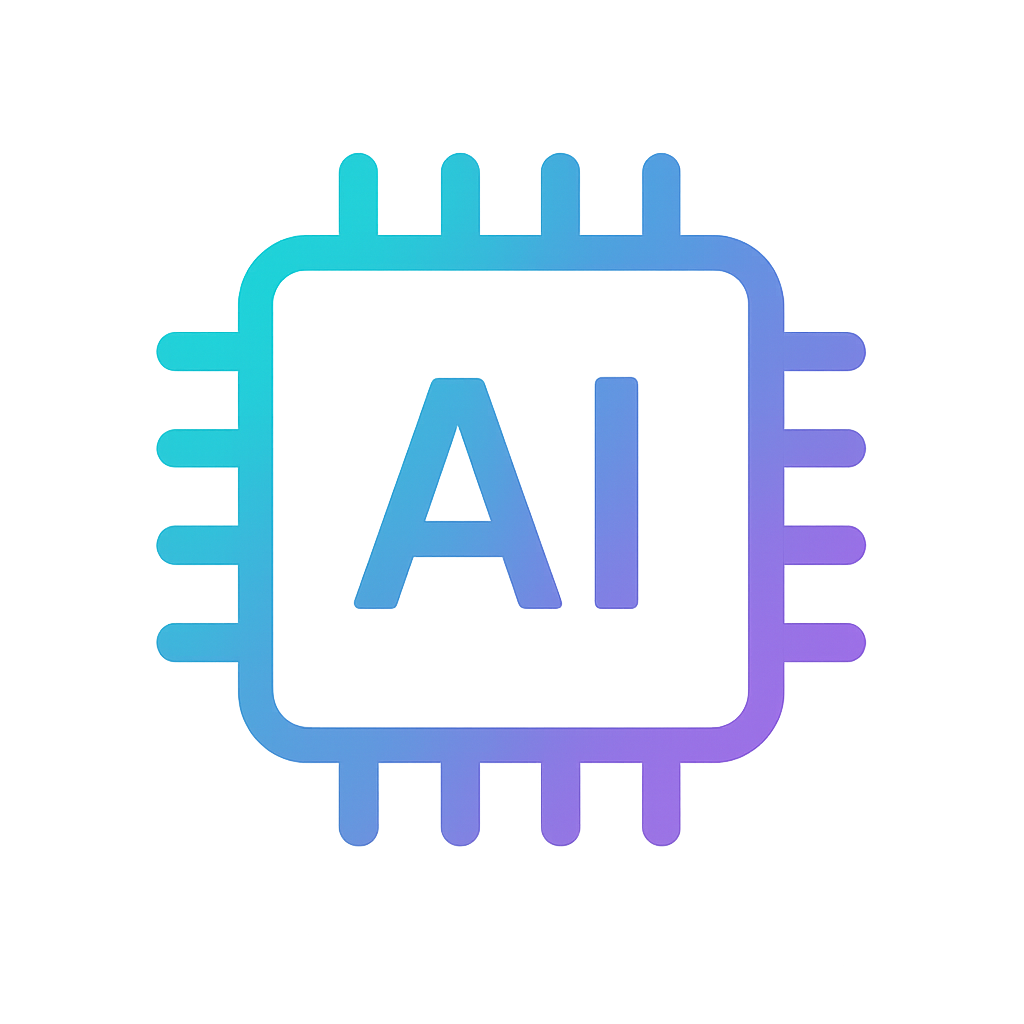Face to face with a pharaoh: Artec 3D digitizes a 4,000-year-old mummy
Challenge: While working on an episode of Expedition Unknown, the Discovery Channel team needed to create an ultra-accurate digital twin of an ancient mummy. This would allow for remote comparison with another mummy located elsewhere, aiming to identify distinctive anatomical and preservation features and confirm whether the mummy dates back to the Old Kingdom rather than the New Kingdom – all without physically relocating either artifact.
Solution: Artec Leo, Artec Space Spider, Artec Studio
Result: A remarkably detailed and lifelike 3D model of the mummy, capturing every anatomical feature down to the teeth and traces of resin on the face – enabling researchers to conduct in-depth analysis and comparative studies, determining its true age and confirming the mummy as the oldest known Egyptian pharaoh ever discovered.
Why Artec: The combination of Artec Leo and Artec Space Spider made it possible to access even the most hard-to-reach areas of the mummy while picking up the tiniest of details. The wireless Leo enabled real-time model visualization on screen – crucial for navigating around the delicate artifact. Space Spider was able to capture the finest anatomical features, including the face and feet, and then all the data was combined in Artec Studio to create an exceptionally realistic and complete 3D model. Since the entire process is completely contact-free, the technology is perfectly suited for working with extremely fragile, ancient artifacts.

Hiway Technologies’ Mark Maurice (right) with Expedition Unknown host Josh Gates. Image courtesy of Hiway Technologies
Egypt, a vast kingdom of the ancient world, left an unparalleled economic and cultural impact across much of the continent and a legacy that continues to captivate us to this day. When we think of ancient Egypt, countless associations, legendary images, and complex questions come to mind – and one of them is about the incredibly advanced technologies this civilization once possessed.
Investigating an ancient mystery in Saqqara
Expedition Unknown, a popular Discovery Channel series, follows explorer and host Josh Gates investigating some of the world’s intriguing mysteries and archaeological discoveries. While working on one of the episodes, the team chose the ancient Egyptian city of Saqqara for another immersive adventure. This time, they joined archaeologists at Saqqara necropolis to explore the collapse of the Old Kingdom (c. 2686–2181 BCE). During the excavation, the team opened several tombs, uncovering treasures, clues, and haunting remains. As part of the quest, they discovered what was thought to be Egypt’s oldest royal mummy – but they needed to verify if that was truly the case.
Indiana Jones could never have imagined the range of technologies available to modern-day archaeologists. Yet even with all this diversity, the team’s goal resembled a particularly challenging task: how does one analyze and study an artifact as rare, valuable, and fragile as a 4,000-year-old mummy lying behind glass in a museum? The idea to use 3D scanning was inspired by the successful experience of many museums and universities – archaeologists across the globe have come to appreciate this technology, and Artec 3D solutions in particular, for their ability to create digital twins with incredible precision, in record time, and in a completely contact-free way, with no risk to cultural heritage.
Fortunately for the team, they had someone to turn to. Hiway Technologies, an Artec 3D Gold-certified partner in Egypt, is a team of experts operating in the CAD, GIS, and wide-format imaging markets since 2001. The company’s name is synonymous with all things 3D in the country, so a father-son duo, Magued and Mark Maurice were called in to assist with the delicate mission.

Mark and Magued Maurice of Hiway Technologies (left and right) with Expedition Unknown host Josh Gates (center). Image courtesy of Hiway Technologies.
Behind the glass: digitizing a pharaoh
“Discovery Channel contacted us to scan a mummy in Saqqara, in a museum called the Imhotep Museum. It’s the only museum located within the Saqqara pyramid complex itself,” explained Mark Maurice, the company’s 3D scanning expert. “They wanted to compare two mummies and make sure it was an Old Kingdom one, not from the New Kingdom – which is around 1550 to 1070 BCE – by analyzing some specific features. Instead of moving both mummies to the same location, they wanted a digital file – something they could view on a tablet or phone – and compare it with the mummy elsewhere.”
When Hiway Technologies arrived on site, the process began – one that could give viewers goosebumps! As Expedition Unknown host Josh Gates noted on the show, not only were they gaining unprecedented access to scan this mummy, but they were about to do it face to face. Specialists from the museum came to open the mummy’s case and lifted away the protective glass. According to Gates, the team “had the full Mission: Impossible moment there.” With a mask on to avoid any contamination, Mark Maurice began scanning.

Mark Maurice scans the mummy on camera, alongside Expedition Unknown host Josh Gates and museum staff. Image courtesy of Hiway Technologies
“We joined the scene with our scanners – Artec Leo and Artec Space Spider,” explained Maurice. “We used the Space Spider to scan the face and legs, and the Leo for the full body. We later merged the outputs from both scanners. The task was quite challenging, as I couldn’t touch the mummy at all – nor me, nor the Space Spider’s cables.”
Choosing the right tools for the job
The choice of devices was no coincidence. A combination of different Artec scanners has always been a smart idea when a team faces multiple tasks at once. Artec Leo, being completely wireless, made it possible to capture data from the most hard-to-reach areas and collect top-quality data in a short amount of time, while allowing the team to watch the digital replica being built on its HD display.
Video courtesy of Discovery Channel
To ensure that even the tiniest details were captured, the pharaoh’s head and feet were scanned with the Artec Space Spider, the iconic predecessor of Artec Spider II, which inherited its unique ability to render details so fine they are beyond what the human eye or most technologies can detect. Now, all that was left to do was to stitch the data from both scanners and refine the model in Artec Studio.
“I just used Artec Studio for the processing,” said Maurice. “There was no HD Mode yet, so I followed the standard procedure – global registration, outlier removal, fusion.” Maurice processed the Space Spider head and feet data separately, then aligned those high-resolution scans with the full-body scan captured by the Leo. To ensure optimal results in the final fusion, he removed overlapping areas from the Leo scans, prioritizing the elaborate detail captured with the Spider. Once aligned and cleaned, the scans were all fused into a single model, and Maurice applied texture as a final touch.
From digital twin to historical discovery
The resulting digital twin was incredibly detailed, from the teeth inside the mummy’s mouth to traces of hair. In the next episode, the model was used during the on-screen comparison with another mummy. This ultra-realistic 3D replica of the mummy’s face not only made all its anatomical features clearly visible, it also featured a dark material.

3D model of the pharaoh. Image courtesy of Hiway Technologies
Upon earlier inspection, the team identified it as resin, a substance not typically associated with Old Kingdom mummification practices. This discovery led to two possible conclusions: either the mummy was preserved at a later date, when more advanced techniques were available, or the Old Kingdom had access to amazingly sophisticated mummification methods far ahead of their time.
“In the second episode, they confirmed it’s the oldest mummy ever discovered in Egypt – belonging to the Old Kingdom. That’s truly remarkable,” shared Maurice. “My favorite part of this project was just sitting next to the mummy. They removed the glass, so there was nothing between me and the mummy. That was the most memorable part – being so near to something that ancient and unique.”

Mark Maurice digitizing the mummy’s face with Artec Space Spider. Image courtesy of Discovery Channel and Hiway Technologies
Beyond Saqqara: a legacy of digitizing ancient history
This incredible experience was not the first time the Hiway team had the chance to digitize ancient Egyptian heritage. The 3D scanning experts had already worked with film crews, such as Planète+, a French channel, making a documentary about Cleopatra. For that project, the Hiway team used Artec 3D solutions to scan sections of the Dendera Temple, focusing on the specific carvings on its walls called cartouches – the places bearing the names of ancient kings or queens. In addition to these delicate inscriptions, they captured Coptos, a 6 × 4 × 2 meter structure covered in engravings, located in Qift, near Dendera. Released in 2023, this documentary became yet another showcase of both the team’s expertise and the outstanding capabilities of Artec technology: the power to capture in 3D the details of ancient heritage that are as delicate as they are refined, a task only a few scanners in the world are equipped to handle.

Hiway Technologies capturing the ancient structure of Coptos with Artec Leo. Image courtesy of Hiway Technologies
Even globally recognized names like Discovery Channel require a knowledgeable local guide to navigate the local cultural landscape. Fortunately, their guide also happened to be an expert in the very technology that few others in the field could match. In a way, Hiway started a trend: Artec ambassadors came to Discovery Channel’s aid again – for example, during work on an episode dedicated to the lost tomb of Alexander the Great.
The story of digitizing a mummy in Saqqara is a striking example of two revolutionary technologies: one ancient, one ultra-modern – coming together across millennia. As mentioned in the Expedition Unknown episode, it is both terrifying and exhilarating when nothing stands between us and the oldest Egyptian pharaoh. Four thousand years ago, the techniques used to create this mummy were next-gen technology. Now, the new state of the art is being used to scan it. At Egypt’s Imhotep Museum, all this came together in a 3D scanning session, illustrating how to bring ancient heritage to life and make it accessible – with groundbreaking technology, unbeatable skill, respect, and admiration.
Scanners behind the story
Try out the world's leading handheld 3D scanners.






